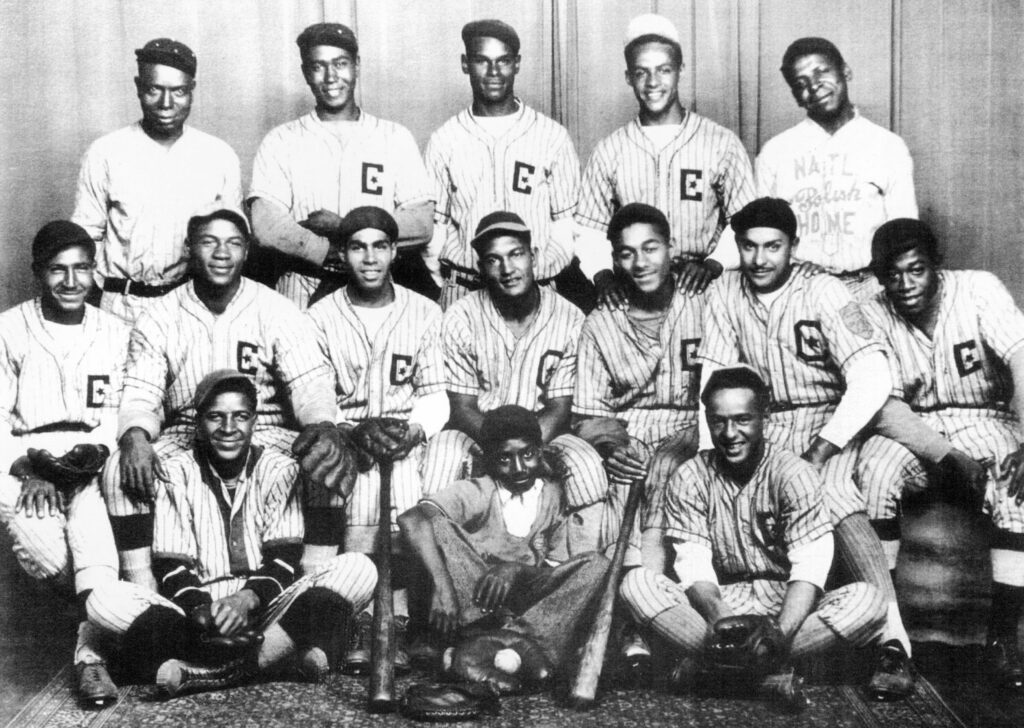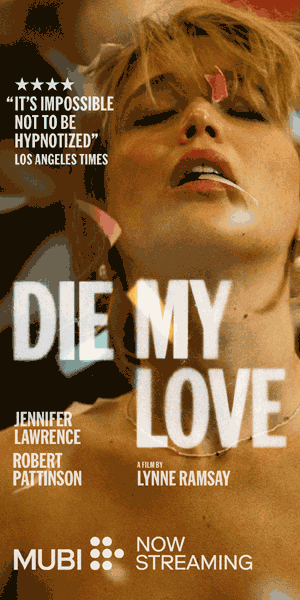When the popular video game MLB The Show 22 came out last year, it featured a new addition to the lineup: the 1934 Chatham Coloured All‑Stars, the first all-Black team to win an Ontario Baseball Amateur Association championship. To help promote the virtual players — including the likes of Don Tabron, Cliff Olbey, Hyle Robbins, Wilfred “Boomer” Harding, and Ferguson Jenkins Sr. (the father of the legendary Hall of Fame pitcher Ferguson “Fergie” Jenkins Jr.) — the Ontario Lottery and Gaming Corporation, in conjunction with Major League Baseball, released a short documentary, Chatham Plays On. “They were just a group of young men wanting to show people that this is everybody’s game,” Dorothy Wright, president of the Chatham-Kent Black Historical Society, explains on screen. “They may not have had the money and the houses and everything else, but they were our heroes.”
“Despite their achievements,” a title card then points out, “memory of The Chatham Coloured All‑Stars is fading.” Thankfully, two fascinating new books are also helping to reverse that decline: Heidi LM Jacobs’s 1934 and Miriam Wright’s Sporting Justice. The authors are colleagues at the University of Windsor, and they have previously worked with another colleague, Dave Johnston, on an award-winning website, Breaking the Colour Barrier. Jacobs and Wright each have their own perspectives, but they both admire this team that broke barriers, fought racism, and entertained sports fans.
A digital scholarship librarian, Jacobs recently co-authored 100 Miles of Baseball: Fifty Games, One Summer with her husband, Dale. Here, her thoughtful and engaging prose style makes readers feel like they’re part of the historic team’s incredible journey. “At first glance, the 1934 Chatham Coloured All‑Stars appear to come out of nowhere,” Jacobs writes. “But if we look more closely at the local and regional newspapers, we will see that the seeds for this championship season had been planted over the generations.” Indeed, Black communities in southwestern Ontario — whether in larger cities like Chatham and Windsor or smaller settlements like Harrow, New Canaan, and Colchester — had a rich baseball tradition. Jacobs describes a much older club, the Chatham Giants, as the “most significant precursor” to the All‑Stars. Two players from that team’s early roster — Happy Parker and Percy Parker — would later coach and manage the All‑Stars. “In this way,” Jacobs continues, “we can trace the beginnings of the Chatham Coloured All‑Stars to at least 1915, but their origins run even deeper than that.”
Beginning with their 1933 inaugural season, the Chatham Stars played in the four-team Chatham City League, along with the R. G. Duns, Kent Bridge, and C. C. Braggs Insurance. According to Blake Harding, the son of the first baseman Boomer Harding, the original bench consisted of a “group of friends who basically got together to stay out of mischief” and who built a camaraderie that “grew and lasted a lifetime.” Perhaps unsurprisingly, those friends struggled at first, finishing the regular season with four wins, eleven losses, and four ties. Yet they earned the local Wanless Trophy after winning five straight post-season games and defeating the mostly white Chatham Juniors. It was a sign of things to come.

Some of the coaches and players — and a bat boy — of the 1934 Chatham Coloured All-Stars.
Leddy Library Archives and Special Collections; Courtesy of Wilfrid Laurier University Press
The game was weird from start to finish and baseball such as was never seen in the major leagues nor even dreamed of by Cobb or Daubert, was provided for the several hundreds who witnessed the affair. From the players’ standpoint, the game was all right, the Buxton gladiators leaving the city in high spirits and the local hopes not a bit downhearted over the trimming handed them. From the spectators’ point of view, the affair — well — it was a bit different.
Jack Calder, a nineteen-year-old sportswriter for the Chatham Daily News, followed the Chatham Stars extensively in 1934 (by that point, most other papers were referring to the team as the Chatham Coloured All‑Stars). “Through Calder’s 1934 columns,” Jacobs writes, “we’re able to see the strengths of each player, how each evolves through the season, and how the team comes together to become a formidable force.” On June 8, he wrote about the first loss of the season, mentioning a “general melee” that quickly died down. Was racism at play on the diamond? Calder didn’t say; in fact, he tended to avoid explicit references to race. Such references, however, were “almost always included in out-of-town stories about the team,” Jacobs notes.
In their second season, the All‑Stars were an exciting powerhouse squad. As Jacobs explains, their record and style of play proved attractive “to fans in and around Chatham,” many of whom could not afford to follow professional sports closely. They were 15–1 in league play by the end of July, with five of the league’s top hitters and three of its top pitchers. They were also dominant in exhibition contests. The team’s consistency is even more impressive considering that some of its most talented athletes played only sporadically due to other work commitments, including Jenkins, who was a chef at the William Pitt Hotel.
“Economic reasons” as much as baseball brought players to Chatham, among them Earl “Flat” Chase, whom Jacobs describes as the “stuff of legend.” Initially scouted in Windsor, he became the team’s ace pitcher while batting, according to the author’s calculations, .470 for the season. Teammates like Harding and Tabron spoke glowingly of Chase, and Jenkins Jr., who watched him as a young boy, once said he was “probably the best pitcher, and the best catcher, and the best hitter of the ball.”
The team clinched a spot in the 1934 league championship on August 1. The rest of the season was a straightforward affair that culminated in a three-game sweep of Braggs to reach the OBAA playoffs for the Intermediate B division. But even with an impressive record of thirty-two wins, five losses, and one tie, the All‑Stars had some “less than stellar play” throughout September and October.
On September 8, the All‑Stars beat the Sarnia Red Sox 8–3 in the first game of the playoffs. They advanced after the second game, which Calder described as “erratic,” was declared an exhibition (Sarnia had brought along an unsigned player). On September 15, the team returned to league play, facing Braggs for the Wanless Trophy. The All‑Stars won the first game of that series 8–7 and took home the trophy, though Jacobs has found “no other record of a played game,” perhaps because the other matchups were rained out. The All‑Stars then suffered a “17–7 drubbing” against the Welland Terriers, before ultimately prevailing in that three-game series. In the next round, the All‑Stars came back after initially being “swamped” by Milton “to the tune of 21–4.” Finally, they bested Penetanguishene, winning the provincial championship.
A history professor, Miriam Wright takes a more detailed and academically oriented approach to the All‑Stars with Sporting Justice. “Why a Black team was invited into the Chatham City Baseball League in 1933 can be explained, at least in part because organized baseball in the city was on the verge of collapse,” she writes. “Although Chatham had a city league and teams playing in OBAA-affiliated leagues in the county in the 1920s, most of that had been lost by the early 1930s.”
The All‑Stars would play their home games at Stirling Park, which the grocer Archie Stirling had built near the Canadian National Railway tracks with the financial support of Imperial Oil. His goal was the survival of baseball in his community, “and encouraging talented Black players and a Black ball team was one way to do that.” Wright describes the arrangement between him and the All‑Stars as a “supportive relationship, but also transactional.”
Tellingly, when the Chatham Coloured All‑Stars registered with the OBAA, they did so as, simply, the Chatham All‑Stars. “According to Archie Stirling,” Wright explains, “the team dropped ‘Colored’ for fear they would be rejected because of their race.” Sporting Justice goes into detail about racism at the old ball game. Like Jacobs, Wright acknowledges how Jack Calder praised the team’s work ethic and highlighted individual players in the Chatham Daily News. But she parts ways with Jacobs when she suggests Calder’s coverage was “racialized and racist” and “sometimes veered into stereotypes and mockery.” Calder wrote about the “physicality” of the All‑Stars, for instance, in ways Wright hasn’t seen in his coverage of white teams. Was Calder making “a possible reference to the Ku Klux Klan” when he nicknamed Flat Chase the “Kolored King of Klout,” as Wright suggests? Or was he actually mocking those who held racist views? We may never know.
Facing Penetanguishene in the “neutral city” of Guelph, the All‑Stars took the 1934 OBAA championship on Tuesday, October 23, after a controversial tie the day before. “For the family members of the team who also experienced racial discrimination themselves,” Wright observes, “seeing the All‑Stars return from Guelph after their win made a deep impression that remained with them many decades later.” Still, racial tensions continued to haunt the club until it folded in 1939.
After joining the Western Counties Baseball Association in 1935, the All‑Stars headed to Strathroy to play the Colonials. Racist slogans had been scrawled on the sidewalks, along with a caricature of Chase that, according to Jenkins Sr., featured an “exaggerated nose.” A few days later, the Strathroy Age Dispatch referred to “Dark Days for the ‘Darkies’ ” in its write‑up of the game. And after Calder tut-tutted the All‑Stars for playing rough in Strathroy, an anonymous “colored fan” with intimate knowledge of the team sent a letter to the editor of the Daily News. While conceding the game “may have bordered on the rough side,” the writer criticized the paper’s coverage and chastised the Strathroy team for “making cripples of no less than three (3) of the Chatham Stars by the friendly spike route” and for focusing on the “hue of our flesh and the attire of our wives and girlfriends.”
That letter had some impact. Within two weeks, the Chatham Daily News published an editorial that praised the All‑Stars as “a clever aggregation of colored athletes,” noting the “somewhat difficult experience” they’d had against Strathroy and recognizing that the team had been “compelled to put up with stinging insults, largely because of their racial characteristics.” The comments represented a notable departure from previous coverage of the All‑Stars. “The editorial at least acknowledged the racism,” Wright notes.
Despite the many obstacles, the Chatham Coloured All‑Stars ultimately entered Ontario baseball lore — more than a decade before Jackie Robinson broke Major League Baseball’s colour barrier in 1947. As both Jacobs and Wright make clear, theirs is an inspiring story of determination and triumph, grounded in the belief that sport is for everyone.
Michael Taube is a columnist for the National Post, Loonie Politics, and Troy Media. Previously, he was a speech writer for Prime Minister Stephen Harper.

